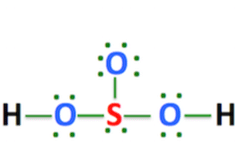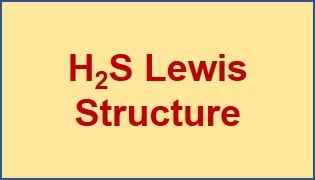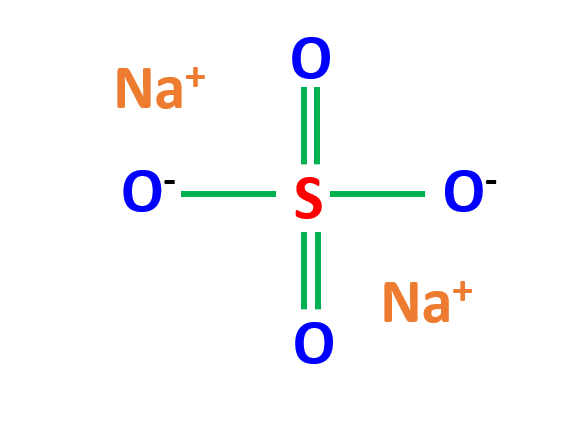The sulfurous acid formula is H2SO3. It is a colorless weak dibasic acid, forms when sulfur dioxide is dissolved in water. It is the conjugate acid of hydrogensulfite.
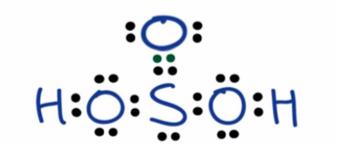
| Sulfurous Acid Formula | H2SO3 |
| Other names | Sulfur dioxide solution or Dihydrogen tri-oxosulfate |
| Structure | trigonal Pyramidal structure |
| Valence electrons | 26 |
| Molar mass | 82.07 g/mol. |
Table of Contents
Sulfurous Acid
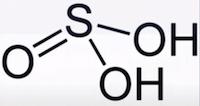
Sulfurous acid is also called sulfur dioxide solution Dihydrogen tri-oxo-sulfate or Tri-oxo-sulfuric acid. Its formula is H2SO3.
If we draw its Lewis structure, the Sulfur (S) atom with the lowest electronegativity comes at the center of the structure.
Three oxygen atoms surround the sulfur atom.
Two hydrogens (H) atoms are attached to the polyatomic ion of SO-3. There are 26 valence electrons.
The Oxidation state of the sulfur atom is +4.
It has a trigonal Pyramidal structure.
Step by Step Construction of Lewis Structure
The four east steps to drawing the Lewis structure are given below:
Step-1: Count the valence electrons of atoms
H2SO3 molecule consists of two hydrogens, three oxygen, and one sulfur atom.
The electronic configuration of individual atoms is given in the table.
| Atom | Electronic Configuration | Valence Electrons (V.Es) |
| 1H | 1S1 | 1 |
| 8O | 1S2 2S2 2P4 | 6 |
| 16S | 1S2 2S2 2P6 3S2 3P4 | 6 |
Sulfurous acid = 2 Hydrogen atoms + 1 Sulfur atom + 3 Oxygen atoms
= 2(1)+1(6)+3(6)
V.Es = 26
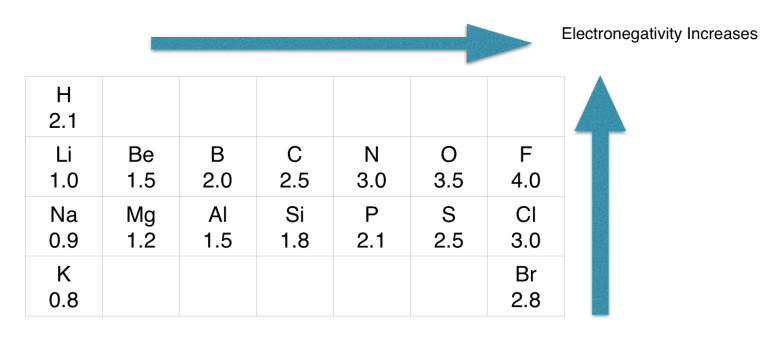
Step-2: Determine the central atom
As per the rule, sulfur comes in the middle because it’s the least electronegative.
If we check the proper arrangement of hydrogen, sulfur, and oxygen in the periodic table, we will find that sulfur is the least electronegative of all.
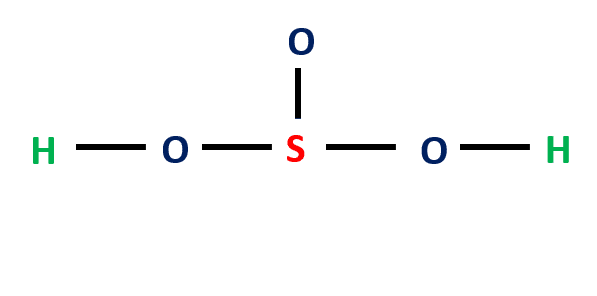
Step-3: Place electron pairs between the atoms
In the figure, one electron pair between two atoms is equivalent to one line. Out of 26 electrons, ten electrons will be used in pairs between atoms.
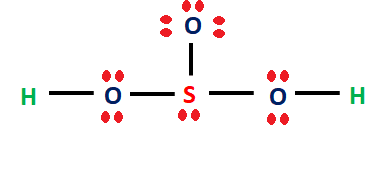
Step 4: Place remaining electrons around the other atoms
We need to distribute the sixteen remaining valence electrons. Hydrogen can only contain a maximum of two electrons. Sulfur and oxygen can contain eight electrons each, so we add more electrons to them to complete the octet.
Molar Mass of Sulfurous Acid
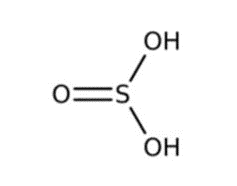
Oxygen molar mass = 15.9994 g/mol.
Hydrogen molar mass = 1.00794 g/mol.
Molar mass of sulfur = 32.065 g/mol.
Molar mass of H2SO3 = 2(1.00794)+32.065+3(15.9994)
=82.06288 g/mol.

Uses of H2SO3
- It can be oxidised to sulfuric acid or sulfate by accepting another oxygen atom. [Ref]
- Powerful reducing agent. reduces chlorine to sulfuric acid and hydrochloric acid.
- good disinfecting agent.
- It is used to bleach paper products and straw products, like bags and hats.
Is H2SO3 a strong acid?
Pure anhydrous H2SO3 has never been isolated or detected. Sulfurous acid (H2SO3) is a weak acid; aqueous H2SO3 does not dissociate entirely into H+ (H3O+) and bisulfite ions, meaning that the bisulfite ion is comparatively stronger in maintaining a proton when there is a base, such as water.
The sulfurous acid chemical formula shows that it is an acid with oxygen atoms in its chemical formula.

Important Links
- Characterization of H2SO3.
- Safety data sheet – Sulfurous Acid
- Sodium Sulphate-Properties
Sulfurous Acid Formula (Key Points)
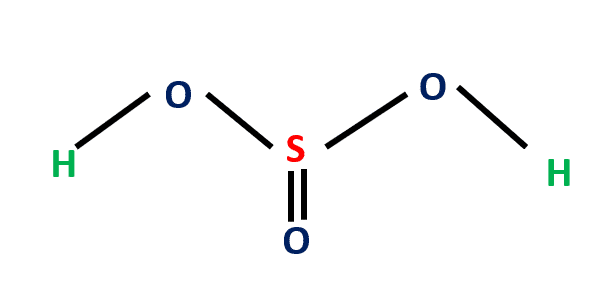
- The sulfurous acid formula is H2SO3
- It is a weak inorganic acid.
- Its odor resembles Pungent burning sulfur.
- Upon heating at 150 degrees Celsius, H2SO3 can be decomposed into sulfuric acid, water, and sulfur.
- It is a diprotic acid and contains two donatable ions.
- The boiling point of H2SO3 is -60 degrees Celsius.
- It is corrosive to tissue and metals.
- It is found in acid rain.
- H2SO3 is the conjugate acid of hydrogen sulfide.
Related Links
N2O Lewis Structure| Laughing Gas
CO2 Lewis Structure and Molecular Geometry
SO2 (Sulfur Dioxide) Lewis structure
SiO2 Lewis Structure| Step By Step Construction
NH3 Lewis Structure & Molecular Geometry
Is HCl Polar or Nonpolar?
CH4 Lewis Structure & Molecular Geometry
Frequently Asked Questions (FAQs)
1. What is a sigma bond?
In chemistry, sigma bonds (bonds) are the strongest type of covalent chemical bond. Atomic orbitals colliding head-on produce them. The symbol for a sigma bond is σ
Sigma bonds are the strongest covalent bonds because the relevant orbitals are directly overlapping. Electrons are the electrons that are involved in forming a connection.
Sigma bonds are the strongest covalent bonds because the relevant orbitals are directly overlapping. The electrons that are involved in a bond are known as electrons.
2. What is Sodium Sulfate?
The sodium salt of sulfuric acid is sodium sulfate. It has the formula Na2SO4 and is an inorganic chemical.
It is mostly utilized in the production of detergents and in the Kraft process of paper pulping. It exists in all forms as white solids that are very water-soluble. With an annual output of 6 million tonnes, decahydrate is an important commodity chemical product.
3. What is sulfur electronic configuration?
Sulfur electronic configuration is 1s2 2s2 2p6 3s2 3p4
4. What is CLF3 molecular geometry?
ClF3 has a T-shaped molecular geometry and trigonal bipyramidal electron geometry. This molecule has two lone pairs and three bound pairs, according to the ClF3 Lewis structure. ClF3 is a polar compound.
5. What is Sulfur hexafluoride?
Sulfur hexafluoride (SF6) is a non-toxic gas that is used in a variety of applications due to its inert properties. While SF6 is non-toxic when used properly, toxic byproducts can be produced during electrical discharges within SF6-filled equipment, posing a threat to the health of workers who come into contact with them.
6. What is Sulfur trioxide?
SO3 (sulphur trioxide) is a chemical compound. It is available in three forms: gaseous monomer, crystalline trimer, and solid polymer. It is solid at just below room temperature and has a relatively narrow liquid range. Gaseous SO3 is the primary precursor to acid rain.
Both Sulfuric acid and Sulfurous acid are diprotic acids, meaning they yield two protons on dissociation. However, sulfuric acid is a strong acid because dissociation of the first proton is most favored in it as compared to H2SO3..
H2SO3 is a corrosive chemical. Any direct contact with it can severely irritate and burn the skin and eyes with possible eye damage. Its inhalation can irritate the nose and throat. Breathing H2SO3 can irritate the lungs causing coughing and/or shortness of breath.
More Interesting Links
Silicon Carbide – An Overview
Hydrogen Bond| Definition & Easy Explanation
Is Titanium Magnetic?
Perchloric Acid| Is It Super Acid?
BrF3 (Bromine Trifluoride) Molecular Geometry, Bond Angles
- BCl3 Lewis Structure in four simple steps - November 1, 2023
- PH3 Lewis Structure in four simple steps - October 8, 2023
- PF3 Lewis structure in four simple steps - September 24, 2023

